Up Next

To celebrate a thrilling year of motorsport, we’ve asked our writers to pick out their favourite pieces published on The Race in 2021.
F1 writer Edd Straw picked out his column on the questions raised from F1’s controversial handling of wheel-to-wheel incidents in the Austrian Grand Prix.
“The penalties in Austria raised some interesting questions and working through the various implications and interpretations of the regulations was a valuable process,” Straw said at the end of 2021.
“At the time, I had some concerns about the way that wheel-to-wheel battles were being regulated and what it might mean, but I had no idea quite how erratic and absurd things would get later in the season.”
The controversy over the trio of penalties issued during the Austrian Grand Prix for forcing rivals off track at corner exits, all three of which involved Sergio Perez – twice as the perpetrator and once as the victim – raises a fascinating question about racing etiquette.
There was significant criticism of the penalties, including from myself, on the basis that the outcome for the driver attacking on the outside was foreseeable.
The well-established racing orthodoxy is that when attacking on the outside, you know you’re going to be ‘shown the grass’ at the exit by the defending driver’s line unless you are properly ahead. Live by the sword, die by the sword.
In the case of the lap-four move when Perez went around the outside of Norris, while their front axles were pretty much level, this was exactly what happened to Perez. He took the risk and he paid the price.
But it’s not only the FIA stewards – including Derek Warwick, who has enormous knowledge and experience and commands respect – who felt this incident deserved a penalty.
There was also significant chatter on social media suggesting Norris should have left a car’s width of space, which my natural reaction was to shrug off.
However, the logic of things having always been this way is no kind of logic at all. So now the dust had settled, it’s time to look at the argument in more depth.
So what are the assumptions underpinning what you might call the classic racing interpretation – that a high-risk move around the outside can legitimately lead to this outcome – and is that position correct?
What the regulations say

Formula 1’s written regulations for wheel-to-wheel combat are perfunctory. While sanctions are due to a driver who is “wholly or predominantly to blame” for an incident, the sporting regulations direct the reader to the FIA’s International Sporting Code for details of what is not permitted. This means chapter four of Appendix L, which covers the code of driving conduct on circuits.
Clause b is the regulation relevant to the Norris/Perez incident. It states:
“Overtaking, according to the circumstances, may be carried out on either the right or the left.
“A driver may not leave the track without justifiable reason.
“More than one change of direction to defend a position is not permitted.
“Any driver moving back towards the racing line, having earlier defended his position off-line, should leave at least one car width between his own car and the edge of the track on the approach to the corner.
“However, manoeuvres liable to hinder other drivers, such as deliberate crowding of a car beyond the edge of the track or any other abnormal change of direction, are strictly prohibited.
“Any driver who appears guilty of any of the above offences will be reported to the stewards.”
This is the only rule that references the need to give rivals room. Note that the specific reference to leaving a car width applies only to defending and retaking the line approaching the corner, therefore not apply to the exit.
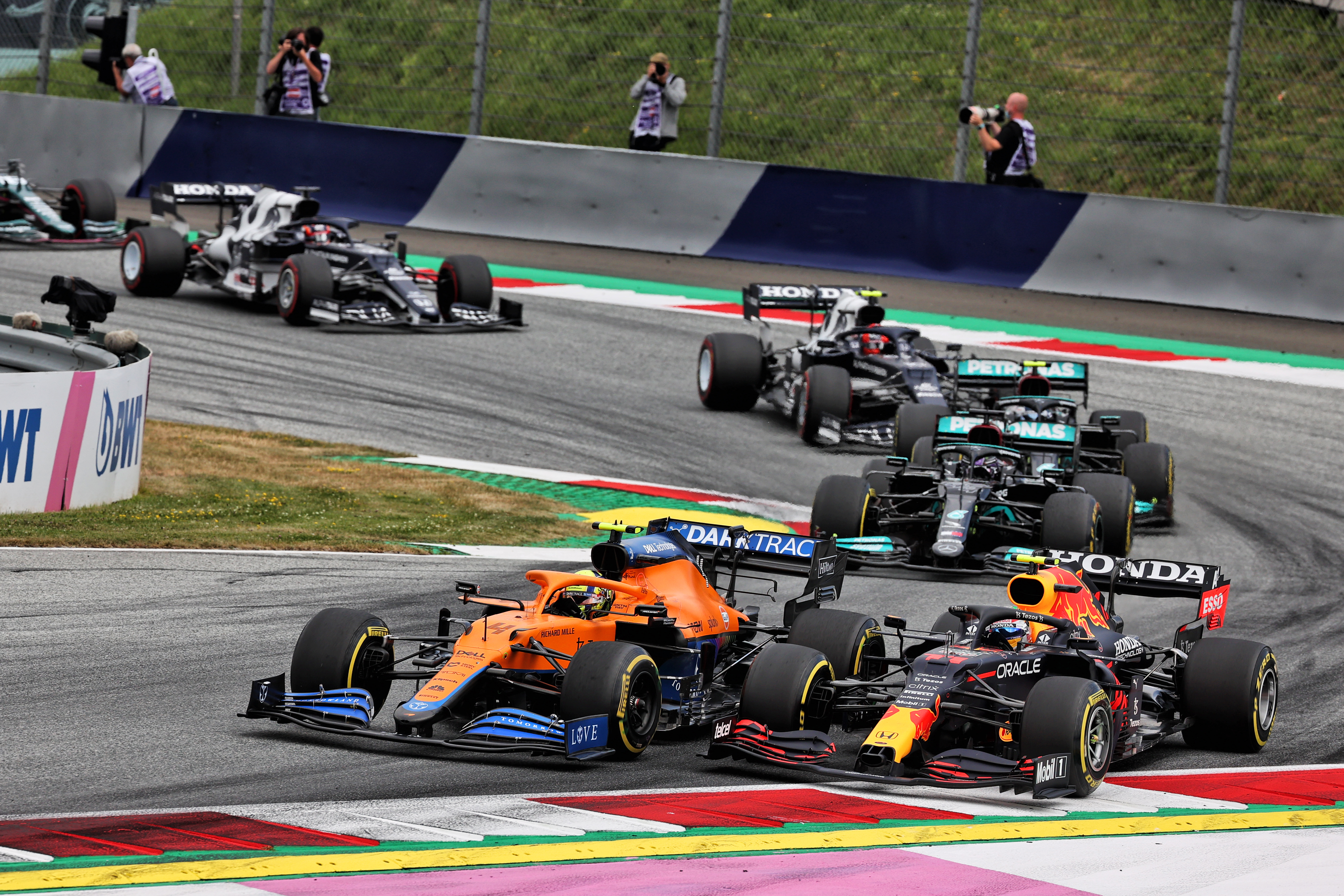
So the key question here is did Norris deliberately crowd a car beyond the edge of the track? That’s a relatively easy one to answer because Perez was indeed forced into the gravel by Norris taking the conventional line at the exit. Norris deliberately took that line and Perez took to the gravel as a consequence.
However, what follows states “or any other abnormal change of direction”, which implicitly suggests that the deliberate crowding of a car beyond the edge of the track mentioned in the same sentence is an ‘abnormal’ move. But you could argue Norris did nothing abnormal, it wasn’t a late swerve, it was entirely predictable. That’s what racing orthodoxy would argue.
The other incidents are similar. When Perez was defending against Leclerc at Turn 4, he did the same thing to the Ferrari driver, albeit with contact earlier in the corner making it a more obvious problem.
When Perez defended in Turn 6, he did attempt to hold a tighter line, the rear briefly stepped out and in correcting it carried him wider than intended – forcing Leclerc to take a bite of the gravel.
By the rules, the key question mark is this issue of whether the car on the inside is doing something abnormal. But what is normal? When defending on the inside against an aggressor on the outside, is it normal to modify your line and leave a car’s width or is it normal to use the conventional line and run your rival out of road?
And in the Turn 6 example, given Perez was trying to hold the line and the rear stepped out, should that happening simply be regarded as part of the risk that Leclerc was taking given it wasn’t deliberate? Or is Perez culpable because of the lack of control?
Giving space
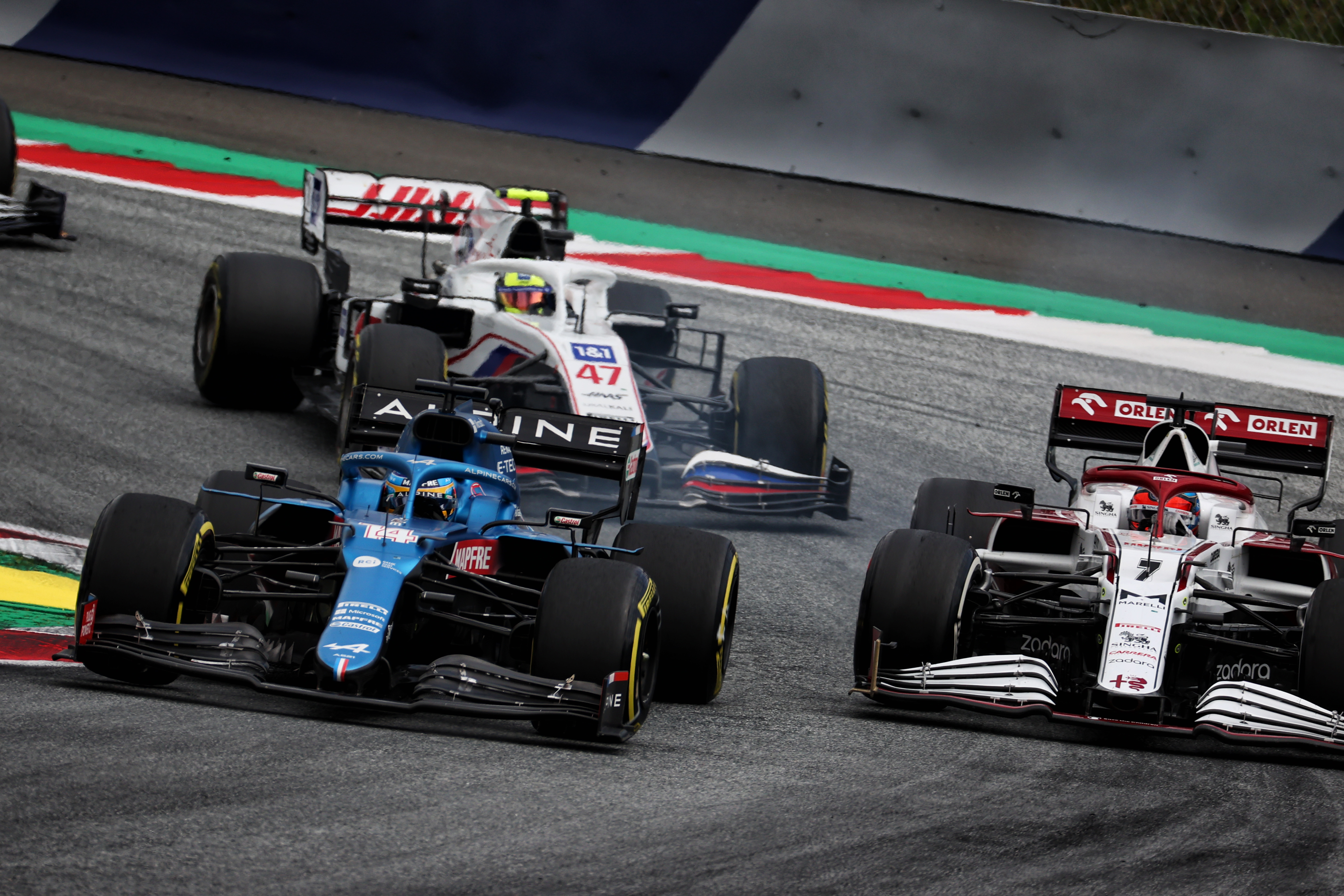
At the heart of this topic is what space a driver attacking on the outside can and should expect to be entitled to.
One interesting train of thought is whether the driver on the outside should expect any different treatment to the one on the inside. The driver on the outside line has to leave enough space for the other and cannot simply turn in, which makes perfect sense. If that wasn’t the case, it would be anti-racing.
And yet, with the roles reversed the driver on the outside is not granted the same space. So why is that not also anti-racing? In Perez’s case, he was fully alongside Norris and while racing orthodoxy might say he can be run out of road, it’s difficult to defend that logically.
There was an excellent example of space being given on the fifth lap of the race when Kimi Raikkonen and Fernando Alonso were fighting for 14th. Alonso passed Raikkonen into Turn 3, only for the Alfa Romeo driver to come back at him approaching Turn 4 in a move that was very similar to the Perez one on Norris.
The crucial difference was that Alonso left a car’s width for Raikkonen at the exit – and only a car’s width, for it pushed Raikkonen right to the edge of the gravel. But it was enough and allowed Raikkonen to complete the move at Turn 6. Alonso and George Russell also showed it’s possible to go side by side through Turn 6 late in the race.
In these cases, the car on the outside was as near as makes no difference fully alongside. On reflection, that seems to mean that being given the space is correct even though there has to be a point where the aggressor will run out of road if they don’t have enough of an overlap.
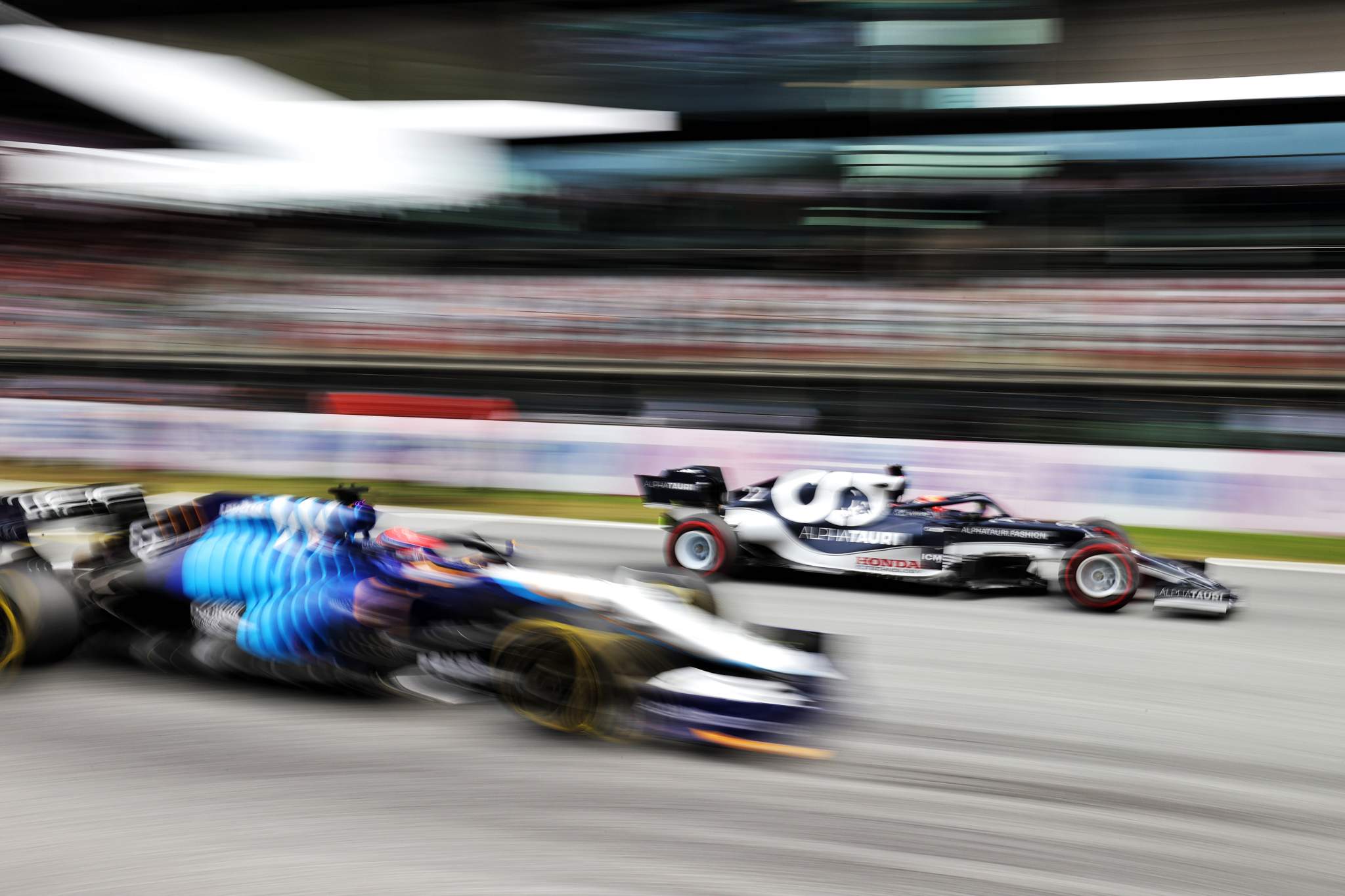
If the driver on the outside turns in while still behind, they are gambling on two things happening for a positive outcome – either their rival will be overly generous and leave space, or they will be able to sling themselves around the outside with enough velocity to build that decisive advantage once into the exit phase earn the right to space. But it’s important to note that, right now, the regulations do not define at what point that space must be granted.
So the principle of leaving a car’s width is, in isolation, reasonable. However, in the case of the incidents at the Red Bull Ring, the fact all three of them warranted ‘only’ a five second penalty does suggest it is seen as a relatively minor offence.
After all, Perez ended up losing places and it likely prevented him from finishing ahead of Norris. Forcing another driver off track and potentially ruining their race surely warrants a more stringent penalty?
It should also be noted that the penalties also reverses recent precedents to ‘let them race’ – notably Max Verstappen not being penalised for forcing Charles Leclerc off the track while taking the lead in the 2019 Austrian GP at Turn 3. So whatever happens, that’s something F1 does need to consider to avoid swinging back and forth between the two interpretations.
Shaping a rule
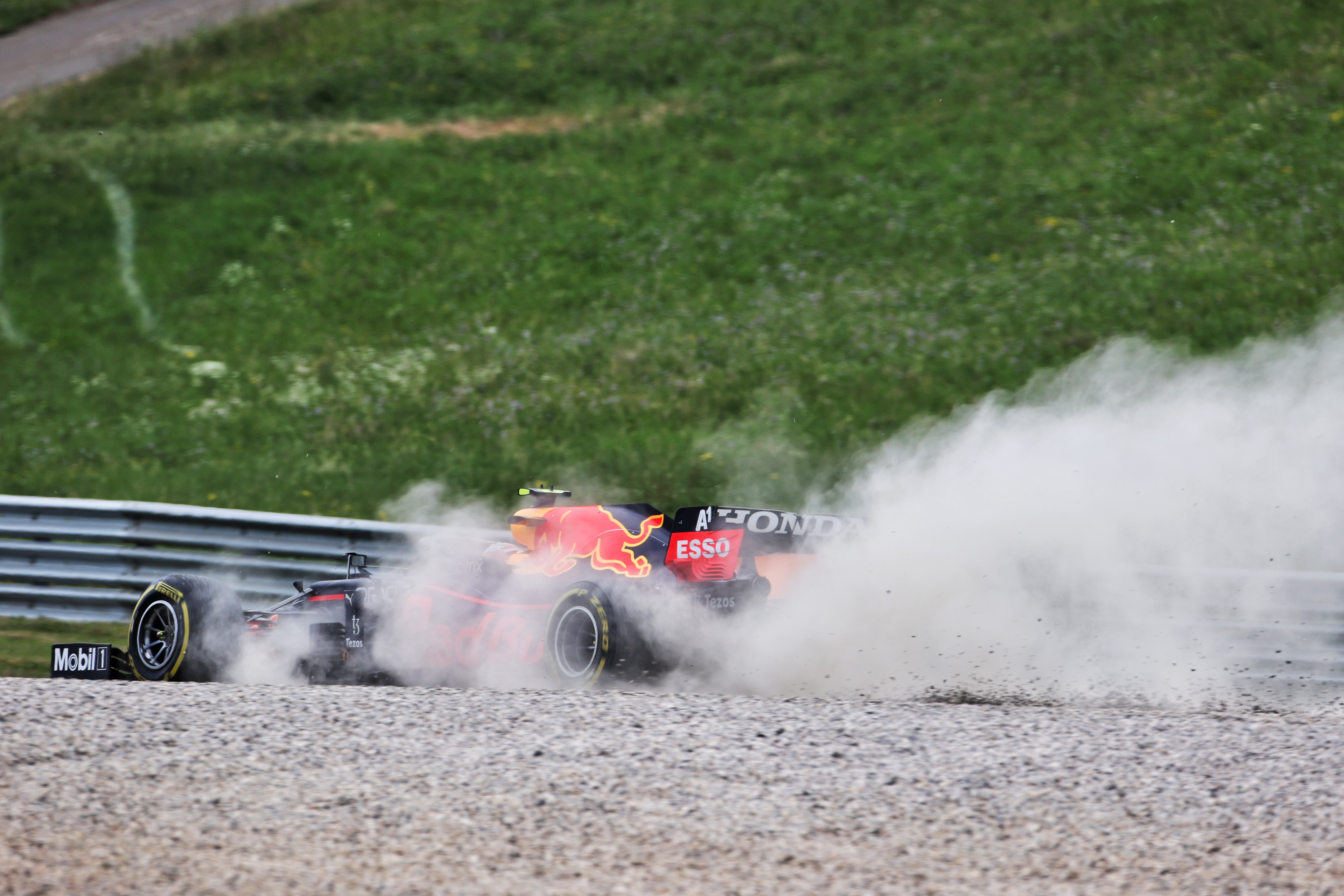
So if there’s a requirement to have a consistently applicable car’s width rule, how might the rules be altered to set the framework for that?
In the Norris/Perez incident, they were broadly alongside with the front wheels overlapping, so let’s take it as a given that the gap should be left in those circumstances. But how much overlap should be stipulated? Should they be roughly level? Is half a car enough? Is the front axle being alongside the rear of the defender sufficient?
It’s a difficult question to answer because simply forcing a driver on the inside to hold a tight line throughout, effectively yielding the position, in the case of a slight overlap at entry is unquestionably anti-racing. It shouldn’t facilitate a simple drive-around pass, which would happen at certain corners.
You also have to factor in more than the position of the cars because relative speed is also important. Any wider regulation would have to allow for that in calculating at what point the car on the outside is entitled to space.
The other huge problem is that there are a huge variety of corners. Turn 4 is unusually long, but a shorter corner shows why there do need to be cases when the driver on the inside does have to have priority. Take Turn 1 at the Red Bull Ring.
At the start of the lap when they had their Turn 4 incident, Norris defended in the first right-hander with Perez on the outside taking to the runoff. But this is a shorter corner with less room at the exit if you don’t allow racing orthodoxy to prevail there then it would effectively mean the defending driver having to cede entirely.
After all, nobody seemed upset that Perez had to take to the runoff there.
Unintended consequences
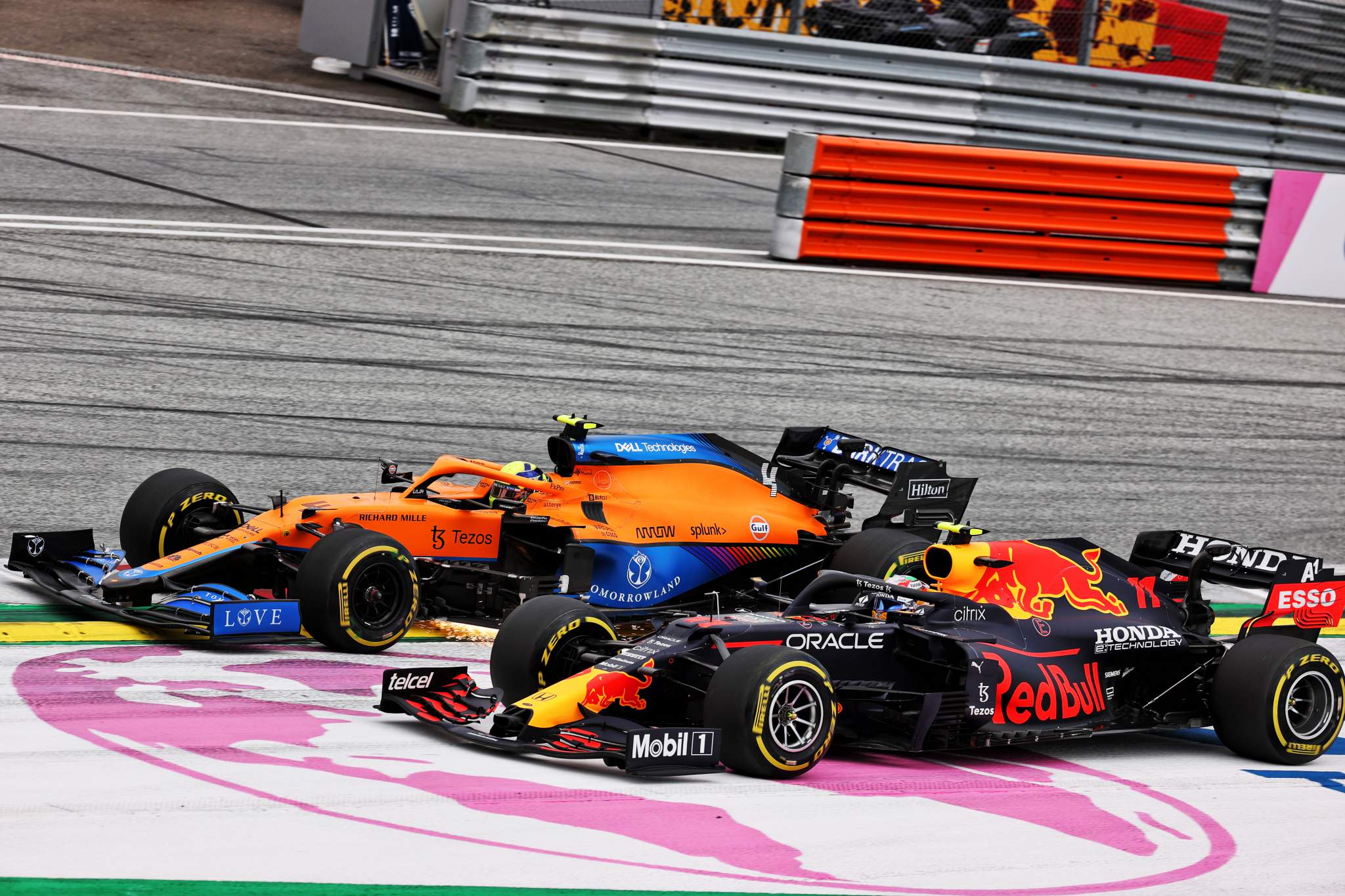
The idea of an absolute, written rule is always an appealing one. It appears to eliminate the ambiguity, enabling the stewards to make easy decisions and drivers to know exactly where they stand.
But the world is a messy, imprecise place and with so many moving parts in such incidents, it risks causing more problems than it solves.
For example, suppose there is a regulation that explicitly demands you have to leave a car’s width for the driver on the outside at all times during the corner. Does that, therefore, excuse any move that forces the car on the outside all the way to the edge of the track even early in the corner?
And what wider impact would it have on racing tactics? There are all sorts of ways it could lead to drivers modifying their approaches through corners to gain an advantage that fits within the letter of the law. And in an extreme case, could it even switch the defensive line to the outside because that’s the more advantageous position?
It would also be a mistake to regulate into oblivion the idea of a risky overtaking attempt. There should be manoeuvres that allow drivers to roll the dice, in the case of an around-the-outside move one where you gamble either on your capacity to get yourself into a position where you have to be given space or your rival being generous, to make it work. There is a place for the racing incident.
There is also the question of exactly how precise you have to be about a car’s width. Coming back to the Alonso/Raikkonen example, the Alpine driver left the minimum possible space and relied on Raikkonen threading his Alfa Romeo through the eye of the needle. If there was a collision, would that, therefore, be Raikkonen’s fault?
“Penalties should be reserved for clear-cut breaches and must not strangle good, hard racing.”
Would it depend on exactly where Alonso had forced Raikkonen to go relative to the white line (which according to the ISC defines the edge of the track), or would it just be one of those things? And were the one car’s width rule in pace, would it have changed this great battle for the worse?
The risk of unintended consequences is one of the most compelling reasons for avoiding over-regulation of on-track battles no matter how appealing the idea is for an overtaking handbook.
In conclusion

My general feeling remains that the level of risk taken by an attacking driver must be taken into consideration when it comes to these battles. But perhaps the racing orthodoxy that is the default for many needs a modification, or at least a clarification to stop drivers on the inside from just forcing the driver on the outside off the track.
So perhaps the penalties were correct and reflect a more modern way of policing on-track combat. A car’s width for a car that is largely alongside, say with the wheels overlapping, is perfectly reasonable – but any less than that and it becomes much less clear. And in shorter corners than the unusual Turn 4, an overtaking car might need an even more decisive advantage. Certainly, a driver on the inside shouldn’t effectively have to yield just because a driver is vaguely in the vicinity.
But those of us who default to the way things always have been must be cautious not to create a situation of over-regulation in response to a position that, when you reflect on it, perhaps isn’t as cast-iron a position as it feels.
Even though many drivers have learned the lesson to only go for it on the outside if you have a clear advantage, it is important that this rule of thumb isn’t used as a blunt instrument to allow brute force driving. That can lead to over-compensation through over-regulation and a worse outcome.
Drivers should be able to race and, unusually considering regulations usually benefit from being as precise as possible, the written rules should have a light touch and allow the stewards to analyse and interpret each varying situation accordingly. And penalties should be reserved for clear-cut breaches and must not strangle good, hard racing.
What’s very clear is that watching Alonso and Raikkonen successfully battle side-by-side through Turn 4 was clearly more enjoyable than what happened with Perez and Norris.
So anything that makes that the more likely outcome in a genuine side-by-side battle is a positive thing for racing. But it must not mean that a defending driver must simply let by an attacker on the outside. It’s not about overturning racing orthodoxy, but perhaps just ensuring it’s recognised that there is a point when a driver on the outside has earned space.
But whatever the guiding principles that are chosen, they must be consistently applied.










